
COLD, FLU & COUGH NEWS AND RESEARCH
Latest Cold, Flu & Cough News and Research
Researchers develop COVID-19 mortality risk calculator
A new study published in July 2020 on the preprint server medRxiv describes the use of machine learning to provide a better understanding of the risk factors in large and mixed groups. The use of algorithms can help objectively evaluate these factors and perhaps capture interactions that could be missed in a purely observational study.
Single-cell RNA sequencing analysis reveals patients' immune responses to severe COVID-19
A new single-cell RNA sequencing analysis of more than 59,000 cells from three different patient cohorts provides a detailed look at patients' immune responses to severe cases of COVID-19.
New mutation in common subtype of influenza virus helps evade immune response
Strains of a common subtype of influenza virus, H3N2, have almost universally acquired a mutation that effectively blocks antibodies from binding to a key viral protein, according to a study from researchers at Johns Hopkins Bloomberg School of Public Health.
Aerosol boxes increase healthcare workers' exposure to COVID-19
A new study shows that certain aerosol boxes of a similar type to those that have been manufactured and used in hospitals in the UK and around the world in order to protect healthcare workers from COVID-19 can actually increase exposure to airborne particles that carry the virus, and thus casts doubt on their usefulness.
COPD has substantial physical and psychosocial impact on younger patients, survey reveals
Results of a global survey of 1,375 adults aged at least 45 years old and living with Chronic Obstructive Pulmonary Disease (COPD) in 11 countries have been published in COPD: Journal of Chronic Obstructive Pulmonary Disease.
Colorado, like other states, trims health programs amid health crisis
As a teenager, Paulina Castle struggled for years with suicidal thoughts. When her mental health was at its most fragile, she would isolate herself, spending days in her room alone.
Establishment of global surveillance network can warn about next pandemic
The virus that causes COVID-19 probably originated in wild bats that live in caves around Wuhan, China, and may have been passed to a second animal species before infecting people, according to the World Health Organization.
New clinical trial to assess safety and efficacy of convalescent plasma to prevent COVID-19
There is only one approved, specific treatment for COVID-19, the illness caused by the novel coronavirus SARS-CoV-2, albeit with modest efficacy.
Commentary: Children infrequently transmit Covid-19 to each other
A commentary published in the journal Pediatrics, the official peer-reviewed journal of the American Academy of Pediatrics, concludes that children infrequently transmit Covid-19 to each other or to adults and that many schools, provided they follow appropriate social distancing guidelines and take into account rates of transmission in their community, can and should reopen in the fal
As winter comes other viruses will compete with SARS-CoV-2 for susceptible hosts
A new study published on the preprint server medRxiv in July 2020 traces how COVID-19 became the predominant cause of respiratory infection in the period from early January until the present.
Pigs and chickens not susceptible to SARS-CoV-2
A team of researchers in Germany aimed to investigate the susceptibility of potential animal hosts and the risk of zoonosis spill-over infections, which are illnesses transmitted to humans from animals. On the other hand, reverse zoonosis pertains to infections in humans that jump to animals.
Manifestations of COVID-19 in newborn babies
In a new study titled, “The clinical course of SARS-CoV-2 positive neonates,” Italian researchers led by Guiseppe De Bernado from Division of Pediatrics Neonatology and NICU, Ospedale Buon Consiglio Fatebenefratelli, Naples, explain the course of the infection among newborn babies.
Front-line health care workers tested positive for COVID-19 may not have typical symptoms
The IVY Research Network has completed initial studies evaluating the epidemiology of COVID-19 in health care workers and patients.
Groundbreaking study identifies unique lung cells that may drive pulmonary fibrosis
A groundbreaking study published today and led by the Translational Genomics Research Institute, an affiliate of City of Hope, identifies unique lung cells that may drive Idiopathic Pulmonary Fibrosis, a deadly lung disease that affects hundreds of thousands of Americans, and for which there is no cure.
Attomarker's new COVID-19 Triple Antibody Test approved for use in the UK
A new COVID-19 Triple Antibody Test, produced by Attomarker Ltd, a spin-out company from the University of Exeter, could represent the next-generation of rapid and accurate COVID-19 antibody testing.
Cloth face coverings, masks are effective in reducing the spread of COVID-19, study says
Cloth face coverings, even homemade masks made with the correct material, are effective in reducing the spread of COVID-19 - for the wearer and those around them - according to a new study published today from Oxford’s Leverhulme Centre for Demographic Science.
Economic stimulus meaningless without the public feeling safe: New research shows two-thirds feel safer with masks
The Chancellor announced a range of measures yesterday aiming to stimulate business and consumer spending, but this is only addressing half the battle and more needs to be done to make the public feel safe when out in public.
PRMT5 inhibitors can help treat advanced melanoma
Scientists at Sanford Burnham Prebys Medical Discovery Institute have demonstrated the therapeutic potential of PRMT5 inhibitors to sensitize unresponsive melanoma to immune checkpoint therapy.
Shingles vaccination rate soars but leaves many behind
Worried about the high cost of the copayment for the shingles vaccine, Jacky Felder, a Medicare beneficiary, opted against getting immunized last year.
Ozone gas can provide a safe means to disinfect personal protective equipment
A new study shows that ozone gas, a highly reactive chemical composed of three oxygen atoms, could provide a safe means for disinfecting certain types of personal protective equipment that are in high demand for shielding health care personnel from Covid-19.

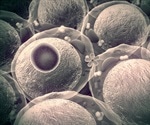
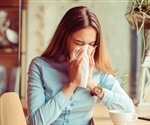
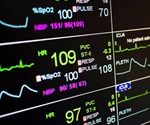



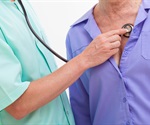
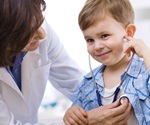
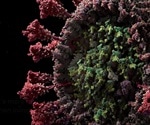
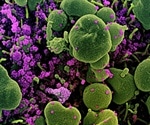
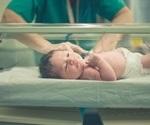


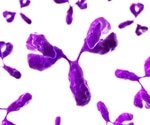

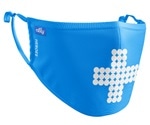
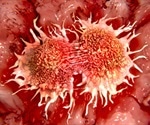
























.png)









No hay comentarios:
Publicar un comentario